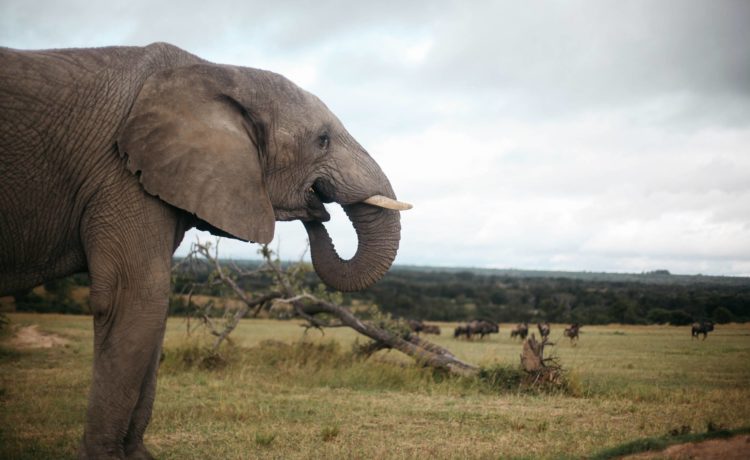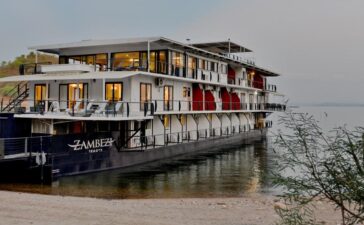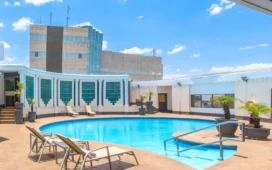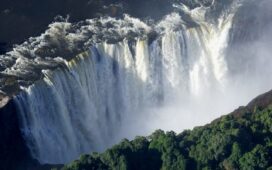SPEAKING at the Kasane Elephant Summit in Botswana recently, President Mnangagwa bemoaned criticism Zimbabwe and the region face when it comes to conservation policies. Zimbabwe believes in sustainable utilisation of its wildlife and the animals must pay for their upkeep so should the region. The President said the country and the region have become victims of their success in conservation and deserve a pat on the back, not a slap.
Needless to say, Zimbabwe is a world leader in sustainable conservation and is one of the must-visit destination in 2019 and it presents huge investment opportunities in the global wildlife and tourism economy.
The country participated in the Kavango Zambezi (KAZA) minister’s conference in Victoria Falls, Kasane Elephant summit early this month and in June the UN/AU Wildlife summit will roar into life in Victoria Falls, all in an effort to ensure that wildlife benefits communities and people must invest in the country’s wildlife.
All these summits are clear indications that Zimparks, the State enterprise responsible for maintaining and marketing wildlife resources led by its director-general Fulton Mangwanya, means what it says and says what it means in ensuring that, the country’s wildlife is sustainably utilised for the benefit of the country and the globe and of course with the support from Minister Prisca Mupfumira and President Mnangagwa.
At 84 000, the country has the second biggest elephant population in the world, it’s one of the four remaining large sources of white and black rhino and this speaks volumes of how the country has managed to sustainably utilise its wildlife resources. In most of the country’s national parks, tourists can easily view the Big Five. Situated in the heart of Southern Africa, Zimbabwe was also known as Dzimbadzemabwe, (House of Stone) named after the ancient city of Great Zimbabwe, a cultural world heritage site.
The country offers the visitor picturesque scenery both natural and man-made and a vibrant sustainable managed wildlife industry. Zimbabwe believes in sustainable utilisation of its natural resources and its tourism is basically wildlife-based hence the need to sustainably manage the resource for the benefit of its people especially the communities which bear the brunt of living with these animals.
It seems some cherish these beautiful species above any concern of people who are killed and injured by these animals not to mention the destruction of livelihoods, some villagers have been impoverished by these animals.
Over the last five years, more than 200 people have been killed in human-wildlife conflicts, more than 7 000 hectares of crops destroyed and thousands of livestock killed by wild animals.
Without doubt, there is a stark difference between the way some from the West view elephants, through wildlife documentaries and Safari holidaying and the perception of those communities who live alongside these potentially dangerous and destructive animals.
Hence the clarion call by leaders in the region who have the biggest elephant population to sustainably utilise the animals for the benefit of the communities and also for the protection of the resource, considering that communities are critical in the safety of these animals.
There is no doubt that wildlife must significantly contribute towards the well-being of its citizens and the wildlife must pay for its upkeep while promoting the socio-economic development of the country.
Zimbabwe through its wildlife conservation authority, the Parks and Wildlife Management Authority manages over five million hectares of pristine wildlife area which represents 13 percent of the country’s land area in addition to another 13 percent in rural areas.
The country adopted international best practices in sustainable conservation and it is a key partner in conservation platforms such as the Convention on International Trade in Endangered Species of Wildlife Fauna and Flora (CITES), Convention on Biological Diversity (CBD), Ramsar Convention on Wetlands of International Importance especially as Waterfowl Habitat (RAMSAR), and United Nations Educational, Scientific and Cultural Organisation (UNESCO) World Heritage sites.
Zimbabwe also part of the regional conservation initiatives such as the Transfrontier conservation areas such as Greater Mapungubwe, Great Limpopo and Kavango Zambezi (KAZA), which is the biggest conservation area in the world, with more than 520 000 square kilometres.
More than a third of global elephants are found within KAZA-TFCA which borders five countries namely, Angola, Botswana, Namibia, Zambia and Zimbabwe.
The Great Limpopo is a conservation area between Zimbabwe’s pristine Gonarezhou National Park, Mozambique’s Limpopo National Park and South Africa’s giant Kruger National Park. Zimbabwe has been translocating animals from time immemorial to all corners of the world and we have a track record of doing that. Some of the major zoos in the United States of America, Australia, United Kingdom, have wildlife from Zimbabwe in particular and Africa in general. Before any capture and translocation is done the Scientific Authority undertakes a feasibility assessment on all the receiving properties.
And seeks the concurrence of the receiving country’s relevant authority. All translocations are done after all national, regional and international conditions have been satisfied to ensure that all exports will not be detrimental to the survival of the remaining source populations.
The Scientific Authority advised that all exports processed will not be detrimental to the survival of elephants in the source populations. Regular surveys are done to inform the decision making of the translocation of animals.
Apart from the nationwide aerial surveys of elephants and other large herbivores that are done periodically, we have a robust Ranger-Based Monitoring System that generates meaningful data which is processed by our Scientific Services to give insights on important management on indices of abundance population status and trends.
We also have other populations in the Zambezi Valley where citizen science has become an integral part of our Species Monitoring System.
The country has a National Elephant Coordinator responsible for facilitating the National Elephant Management Strategy (2015-2020) Implementation and Range area-specific elephant management plans.
Zimbabwe has four main elephant range areas and each area has a management plan aimed at addressing specific issues relevant to that area, in sync with the master plan.
The authority is already working on the framework for our post-2020 National Elephant Management Plan and contributing to regional elephant management frameworks such as the Kavango-Zambezi Transfrontier Conservation Area Elephant Management Framework and the Great Limpopo Elephant Management Framework under preparation.
All animals which have been translocated from Zimbabwe were legally obtained following our national laws and applicable CITES regulations were also followed.
Needless to say, before any export permit is processed, verification is sought with the Management Authority of the receiving country and similarly with the Scientific Authorities of the source country which is Zimbabwe.
Our systems might not be perfect, just like any other system, but I have no doubt that all animals were exported (and will be exported) following the laid down live animal regulations of the International Transport Association (IATA). It is an indisputable fact that most of the wildlife is in dry areas and this year there was a drought, therefore there is a need for the provision of water to the animals.
There is no river in Hwange, the biggest national park in the country and it is run on 100 percent borehole water and it needs resources to pump water for our elephants.
The biggest threat to the survival of our elephants is loss of habitat and climate change induced-drought hence the need to manage the population of our animals.
Over the years, money realised from trophy hunting or animal live sales is invested back into conservation, Hwange, for example, is made up of Kalahari sands and the drilling can go as deep as 200m in search of the precious liquid, and this needs resources, hence our call that the animals must pay for their upkeep.
Apart from the provision of water, there is a need for law enforcement, a vehicle for patrols, radio communication, fuel among other operational needs.
Needless to say, Government is facing other social competing needs like education, health among others and it will be expecting milk from hen to expect Zimbabwe to prioritise our wildlife when people are dying due to shortages of drugs, yet the animals can be sustainably utilised for their up and benefit of the current and future generations. – Herald











